Masaccio was a Florentine artist dubbed as the first great Italian painter of the Quattrocento period of the Renaissance. Masaccio, full name Tommaso di Ser Giovanni di Simone was born on December 21st, 1401 in San Giovanni Valdarno, Florence. His most notable works include Expulsion from the Garden of Eden, between 1425-1428, Pisa Altarpiece, 1426, and Holy Trinity, 1427.
During his early years, Masaccio's father passed away when he was just 5 years old. A year later, his brother Giovanni was born and he too would become an artist. He'd be known as lo Scheggia. There is no evidence that Masaccio had any artistic education. However, Vasari dubbed Masaccio the "...best painter of his generation because of his skill at imitating nature, recreating lifelike figures and movements as well as a convincing sense of three-dimensionality."
His first works include the San Giovenale Triptych from 1422, currently located in the Museum of Cascia di Reggello, and the Virgin and Child with Saint Anne from 1424, located at the Uffizi. The San Giovenale Tripytch was discovered in 1961 inside the church of San Giovenale at Cascia di Regello, close to his hometown. In the middle panel, you have the Virgin and Child with two angels at her feet. On the left stands Saint Bartholomew and Saint Blaise and on the right panel, you have Saints Juvenal and Anthony Abbot. Unfortunately, the surface of the painting is badly worn down and some of the framing has been lost.
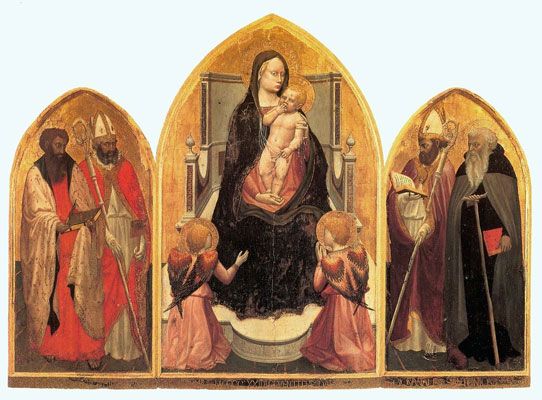
San Giovenale Triptych, 1422, www.thearthistory.org
Masaccio's second work Virgin and Child with Saint Anne was a collaboration with artist Masolino. It is unclear who painted what. It's believed that Masolino painted Saint Anne and the angels that are behind her, holding the cloth of honor and Masaccio painted the Virgin and Child on the throne.

The Virgin and Child with Saint Anne, 1424, en.wikipedia.org
In 1424, the duo collaborated again on frescoes for the Brancacci Chapel in the Santa Maria del Carmine in Florence. They began working in 1425, however the chapel was left unfinished by the two and was instead complete by Filippino Lippi in the 1480's. The works inside the chapel include The Expulsion from the Garden of Eden, around 1425, The Tribute Money, around 1427, and the Resurrection of the Son of Theophilis, mid 1420's. It is unknown why Masaccio left the chapel frescoes unfinished. He did it a couple times. First, he left in 1425 and went to Hungary. He then came back in 1427 to the chapel and started working on the Resurrection of the Son of Theophilis. However, he left the project once again and years and years later, Lippi would take it over. In 1771, completed scenes by Masaccio and Masolino were lost in a fire. The parts that survived were severely blackened by smoke. However, sometime in the 20th century, removal of the marble slabs that were covering two parts of the paintings revealed what the work originally looked like.

The Expulsion from the Garden of Eden, around 1425, en.wikipedia.org
Before and after it was cleaned. Unfortunately, it lost some of its detail.
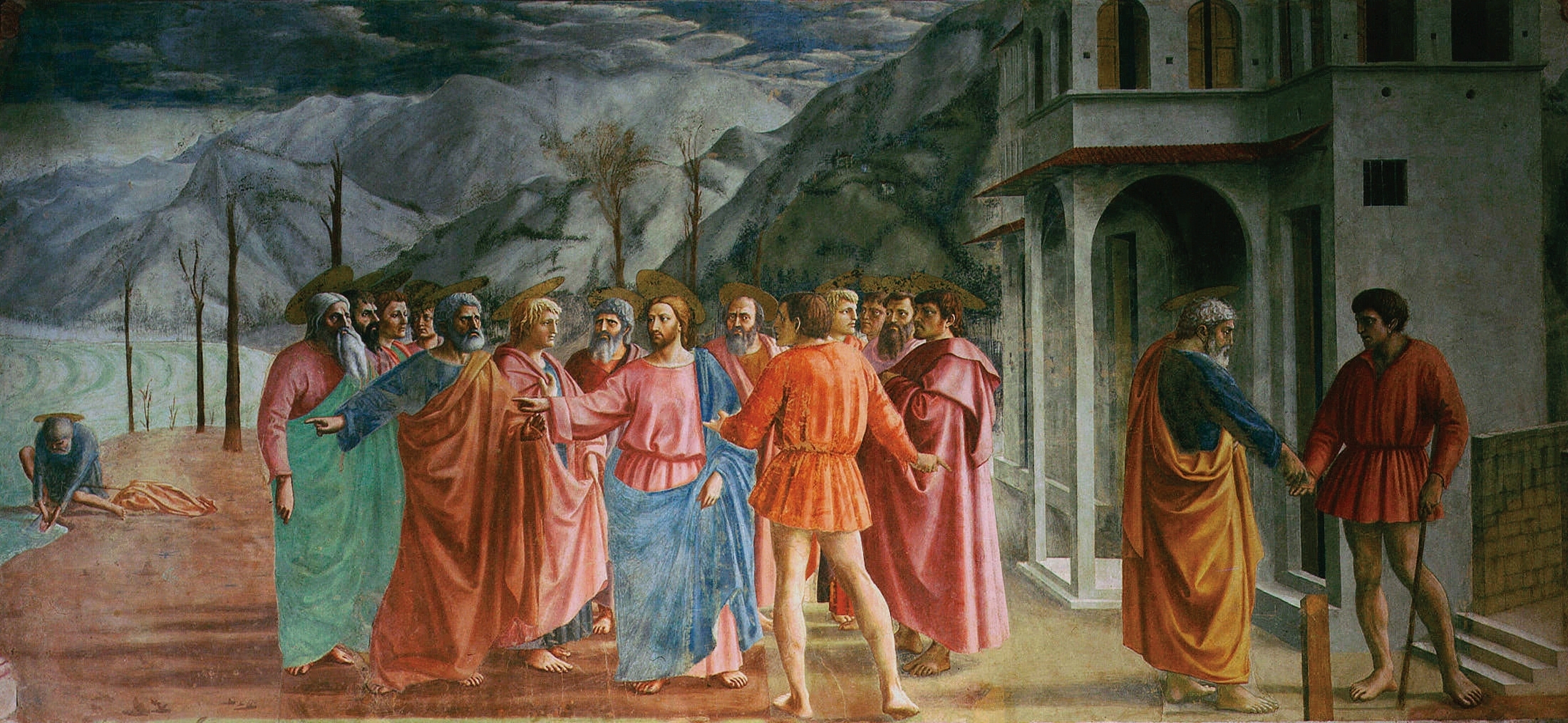
The Tribute Money, around 1427, en.wikipedia.org
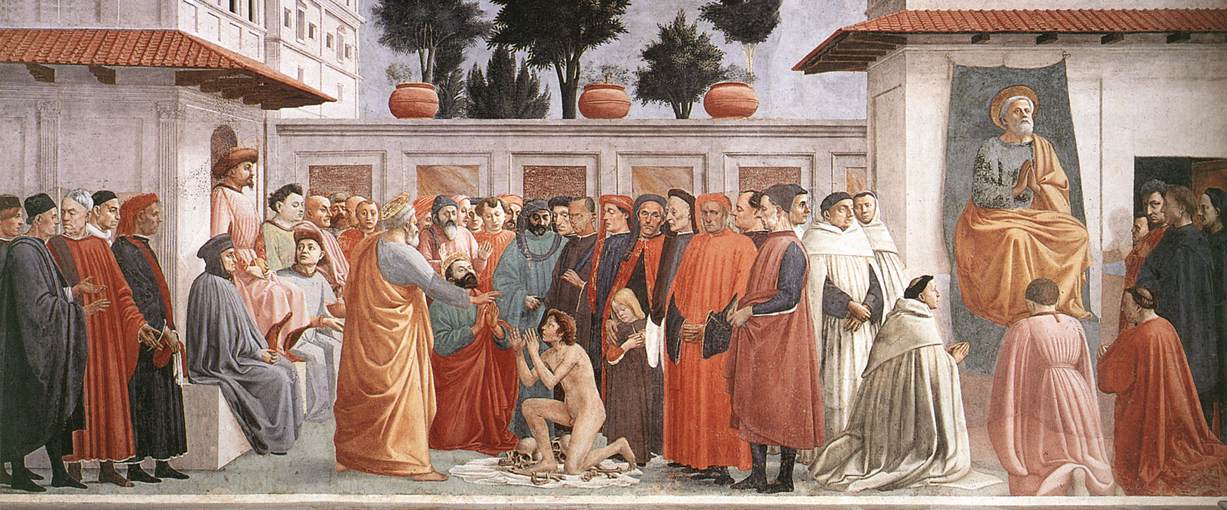
The Resurrection of the Son of Theophilis, mid 1420's, www.wga.hu
Both done by Masaccio and Lippi
In February of 1426, Guiliano di Colino degli Scarsi da San Giusto commissioned Masaccio to paint the Pisa Altarpiece for his chapel in the church of Santa Maria del Carmine in Pisa. During the 18th century, the work was dismantled and dispersed. Only 11 of the 20 panels have been rediscovered in many different collections around the world. You can find the middle panel of The Madonna and Child at the National Gallery in London.
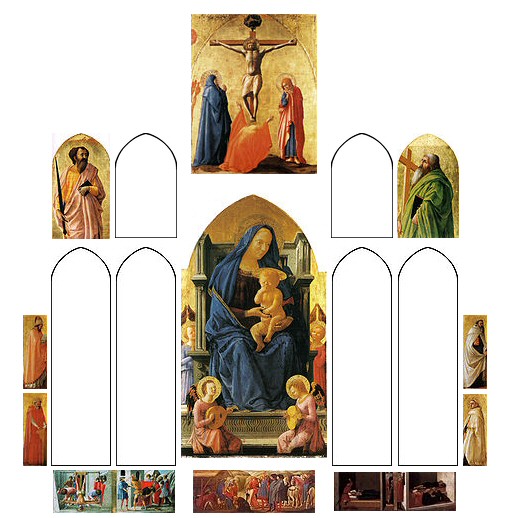
Pisa Altarpiece, 1426, www.travelingintuscany.com
The 11/20 that were rediscovered. The Madonna and Child rests in the center
In 1427, Masaccio was commissioned to create his piece Holy Trinity for the Dominican church of Santa Maria Novella in Florence. Two other works that he created are now unfortunately lost, a Nativity called The Berlin Tondo, 1427-28 and an Annunciation.
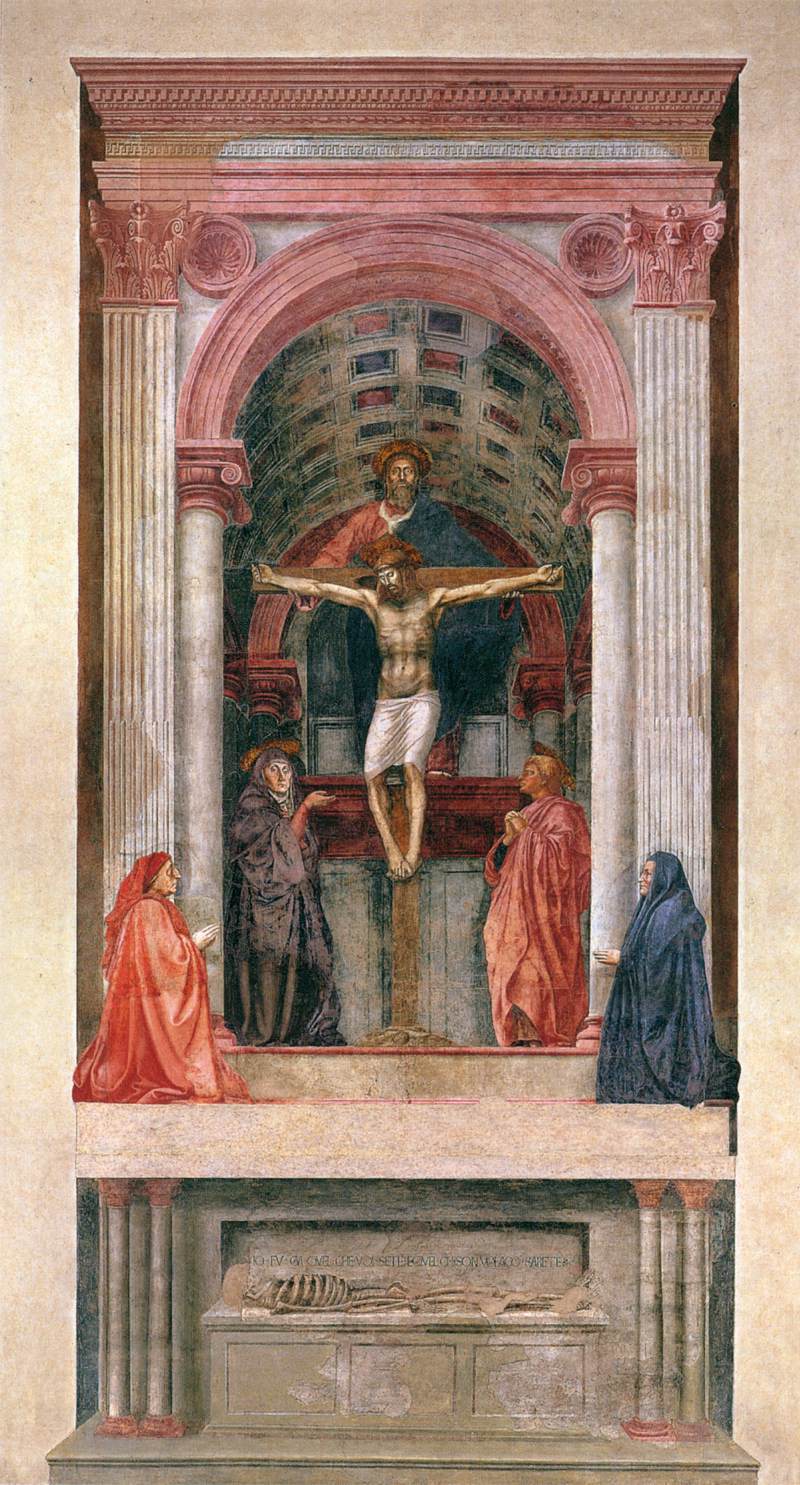
Holy Trinity, 1427, www.eclecticlight.co
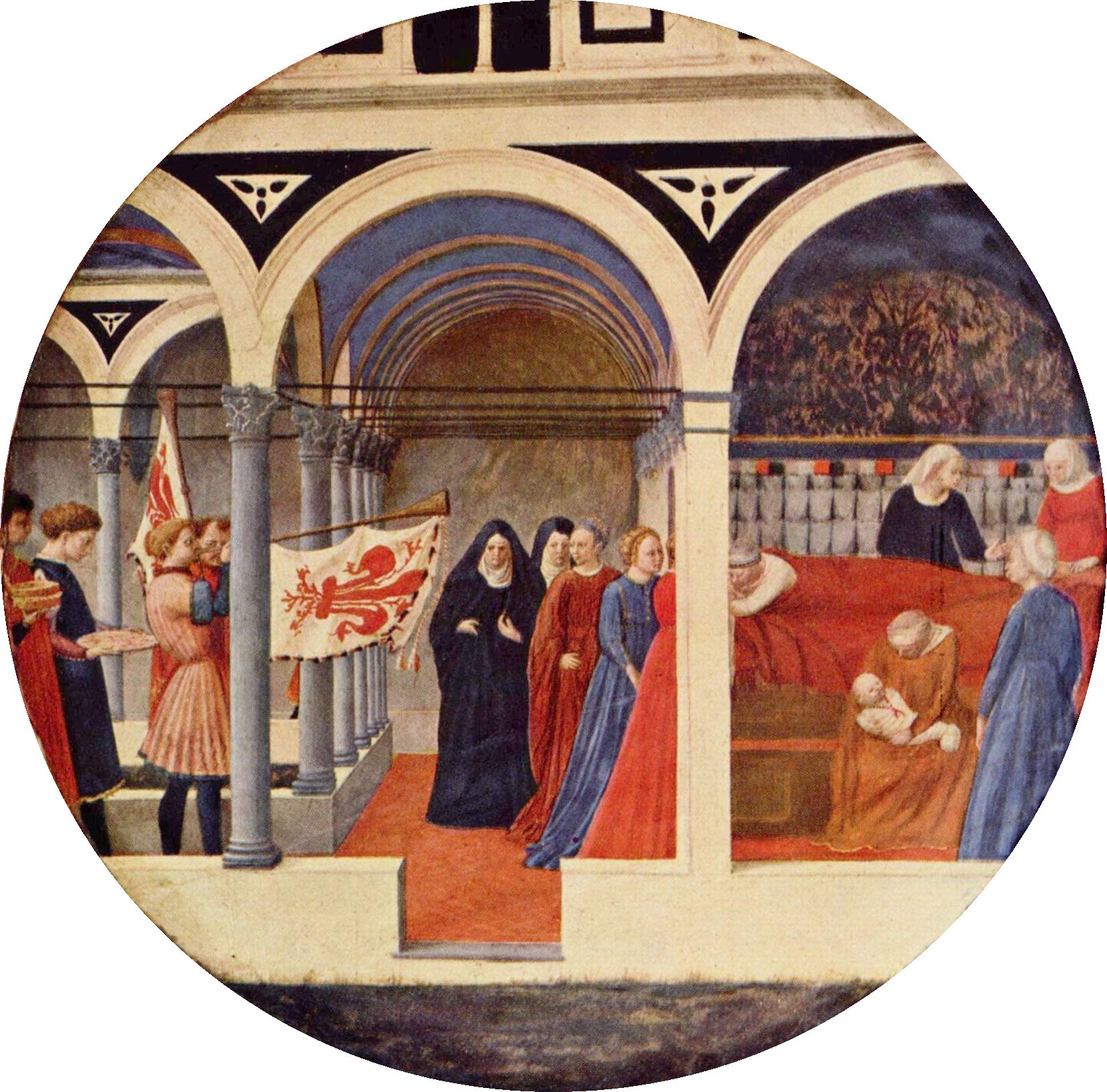
Nativity, The Berlin Tondo, 1427-28, en.wikipedia.org
During the summer of 1428, Masaccio died at the young age of 26. The reason of death is unknown but there is a legend that states he was poisoned by a fellow painter who was jealous of Masaccio.
As of today, only four frescoes that were create solely by Masaccio's hand exist today. The rest were either collaborations or complete by someone else. It is believed that there were other works by him. However, it's also believed that they were destroyed.
When Vasari praised Masaccio's work and how he captured movement and three-dimensionality , he wasn't kidding. Without formal training, Masaccio knew how to paint a body in motion and show how fabrics draped and moved with the body. And, his use of chiaroscuro, atmospheric perspective and linear made his work look so alive.
Filippo Brunelleschi commented on Masaccio's death and said "We have suffered a great loss." He's correct. Masaccio produced incredible work and I can only imagine what else he would have created if his life didn't end so suddenly.
Thanks for coming by! Don't forget to follow!
It's always a pleasure to read interesting things about Italian artists (my country)! Thanks for sharing with us :)
!discovery 15
Most of my favorite artists are Italian. I enjoy sharing my interests with others! :)
This post was shared and voted inside the discord by the curators team of discovery-it
Join our community! hive-193212
Discovery-it is also a Witness, vote for us here
Delegate to us for passive income. Check our 80% fee-back Program